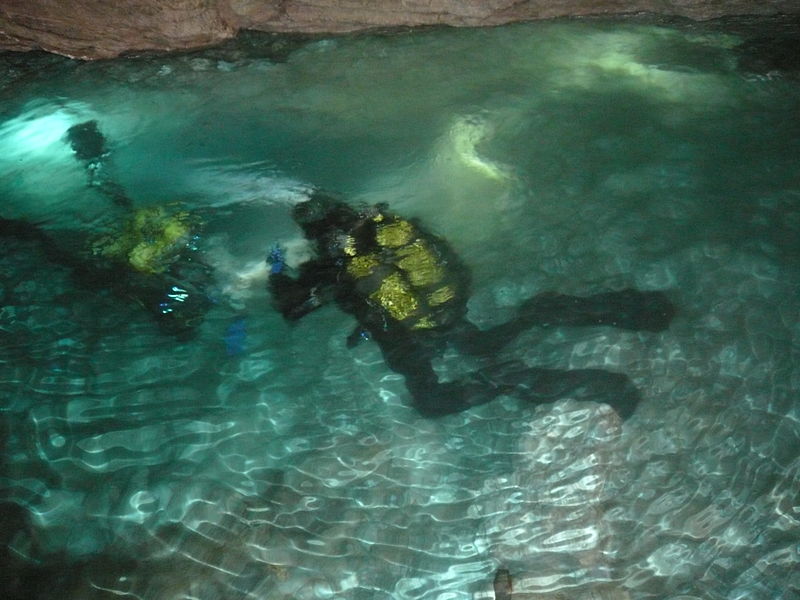Habitat
The blind cave eel is a unique
animal with a habitat that is equally as unique. The eel is
endemic to Australia, which in itself isn't so rare or unique.
However, the area of Australia where the eel is found is where
things get truly interesting. The eel's distribution is limited
to the Cape Range peninsula. (Mees, 1962)
 This area is particularly unique because of its multitude of
subterranean caves. The caves abut the ocean leading to some rare
habitat conditions. The water arranges itself into layers. The salty
brackish water underlies the freshwater at the top. The blind cave
eel has been known to inhabit this thin layer of freshwater that
exists in the coastal regions of the cave system. (Mees, 1962) These
conditions only exist in the coastal region of the caves.
This area is particularly unique because of its multitude of
subterranean caves. The caves abut the ocean leading to some rare
habitat conditions. The water arranges itself into layers. The salty
brackish water underlies the freshwater at the top. The blind cave
eel has been known to inhabit this thin layer of freshwater that
exists in the coastal regions of the cave system. (Mees, 1962) These
conditions only exist in the coastal region of the caves.
Further into the caves there is only freshwater. These freshwater caves serve as the largest portion of the habitat of the elusive cave eel. The caves lead about 4.3 Km inland (Humphreys, 1999) and in many cases they link up with wells and aquifers which the blind cave eel is known to call home. This choice of habitat is one of the main reasons the eels are so hard to study; people can't exactly swim up aquifers themselves. The spaces are much too narrow and constricting. (Bray & Thomas, 2011; Mees 1962) Even with the habitat imposing such unique restrictions, the blind cave eel is far from the only organism to call the cave system of the Cape Range peninsula home.
The Cape Range peninsula boasts one of the most species rich stygofaunal communities in the world. (Humphreys, 1999) The community is mostly dominated by crustaceans but also includes several other invertebrates, a fish species, and of course the blind cave eel. The count has so far reached 400 species across the whole range of the caves. The geographic separation of each well, cave, or aquifer divides this vast cave system into many sub-regions. (Biodiversity, 2009) The blind cave eel had been found in eleven of these sub-regions, however two of them have now been destroyed limiting it to nine sub-regions. (Mees, 1962) This illustrates the problem associated with the eels miniscule range.
The blind cave eel is listed as endangered by the Australian government due to its very small distribution and the relatively small amount of information that is known about it. The threats to its habitat are magnified by the habitat’s diminutive size. The eels habitat has been in danger since the 1960's. The threats include nutrient enrichment, the lowering of the water-table, and the development of its habitat. (Mees, 1962) Nutrient enrichment could have disastrous effects on this unique ecosystem. All of the organisms that inhabit it are highly specialized for it. Therefore, any change to the surroundings could spell extinction for these animals that aren't found anywhere else. The lowering of the water-table will lower the water levels in all of the regions inhabited by this rich stygofaunal community. The lowered water level would affect the community by creating more competition simply because the animals have to compete for the shrinking space. Less water also means less dissolved oxygen which is absolutely essential to every organism in this ecosystem. Development would wipe the habitat off the face of the earth. This would guarantee the destruction of many of the species found within this habitat. Luckily, most of the species are under conservation status from the Australian government. (Biodiversity, 2009) This should ensure the propagation of these species.